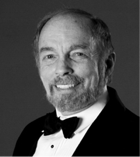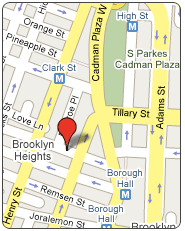In 1900, the original Hutchings organ was given to First Unitarian in memory of Edward H.R. Lyman, by his daughter Annie White. By the mid-1970’s the organ was mechanically precarious and a contract was signed with Mann & Trupiano of Brooklyn, NY to rebuild and restore. As much as 75% of the original Hutchings pipework remains.
are $15 in advance, $20 at the door. Proceeds will benefit programs at First Unitarian.
Prelude and Fugue in C minor J. S. Bach (1685-1750)
Mirroring the dedication recital 16 years ago, the program will open with an early composition from J.S. Bach. In this piece, he was clearly influenced by the works of the great north German composer Dietrich Buxtehude. The prelude is composed in “toccata” style, beginning with a cadenza for the pedals.
Three Baroque Chorale Settings J. N. Hanff (c.1663-1711)
Wär Gott nicht mit uns
Auf meinen lieben Gott
Ein feste Burg
There are countless organ compositions based on familiar congregational hymn tunes of that time. Hanff worked primarily in north Germany – Hamburg, Eutin and Schleswig. Of his compositions only 3 cantatas and 6 organ chorale preludes survive. These melody lines are expressively ornamented, accompanied harmonically in the left hand and pedal.
Three Chorales for Organ Hans Friedrich Micheelsen (1902-1973)
Toccata: “Lobet den Herren”
Improvisation: “Nun ruhen all Wälder”
Choralfantasie: “Erschienen ist der herrlich Tag”
Using well known hymn tunes as a basis for organ compositions has continued to this day. Composed in 1936, these settings of Lutheran chorales are taken from a larger collection called “Choralmusik für Orgel”.
Four Early American Pieces
Trumpet Voluntary Francis Linley (1771-1800)
Presto John Möller (d. 1803)
Voluntary William Selby (1736-1798)
Trumpet Air James Brenner (d.1780)
Linley, Selby and Brenner were all immigrants to America from the British Isles settling in Philadelphia and Boston. Möller was a German-born composer who moved to New York in 1765 where he became manager of “Old City Concerts”. The type of organ for which these charming pieces were written closely resembles the small 18th century English organ built without pedals.
Prière Jean Langlais (1907-1991)
Prière pour les morts
Pasticcio
Theme and Variations from “Hommage à Frescobaldi”
Although blind at an early age, Langlais was sent to Paris at the age of 10 for his musical education at the Institution des Jeunes Aveugles, where he studied piano, harmony, counterpoint,, organ and composition. His final position as organist was at St. Clotilde in Paris. This particular use of dissonance and cadences distinguishes him from other French composers of his day. The first two pieces are of a serious, reflective nature and, by contrast, the other two are filled with humor. Concerto in F Major (Op. 4, No. 5) G. F. Handel (1685-1759)
Larghetto- Allegro
Allegro
Larghetto
Allegro
Handel’s many organ concerti, composed for organ and chamber orchestra, were a favorite of English concert audiences. Handel had added them as extra attractions to his great Oratorio concerts and were inserted between sections of the oratorios with the definite purpose of providing a lighter atmosphere for the audience.
Choral Variations on “Veni Creator” Maurice Duruflé (1902-1984)
Upon moving to Paris at age 17, Durufle studied with Tournemire, Guilmant and Vierne. In 1927 he was appointed assistant to Vierne at Notre Dame and later became titular organist at St. Etienne-du-Mont. This set of variations is based on the well-known 9th century chant “Veni Creator Spiritus”. It begins with a straight forward rendition of the tune which is then followed by 4 variations. The final variation is composed in the French Toccata style.
Walter Klauss served as Minister of Music at All Souls Unitarian Church in Manhattan from 1976 until August 2014. He also founded New York’s critically acclaimed Musica Viva concert series at All Souls. Mr. Klauss’s illustrious career began in his hometown of Cleveland, Ohio with an organ recital at age 17 at the Cleveland Museum of Art. Four years later he was invited to give the premiere American performance of Jean Langlois’s Organ Concerto with members of the Cleveland Orchestra. He received his M.A. degree from Case Western Reserve University before moving to New York City. He chaired the Music Department at C.W. Post Center of Long Island University before retiring with the title of Professor Emeritus. He has performed and conducted concerts all over the world, including Germany, Italy, Spain, Portugal, Morocco, South Korea, England, and Zimbabwe. He is on the music faculty of Queens College (CUNY) and Artist in Residence at The Old Whalers’ Church in Sag Harbor, New York. Mr. Klauss continues to appear as a recitalist and guest conductor of festival choruses and to lead workshops in choral conducting and performance techniques.




Comments are closed.